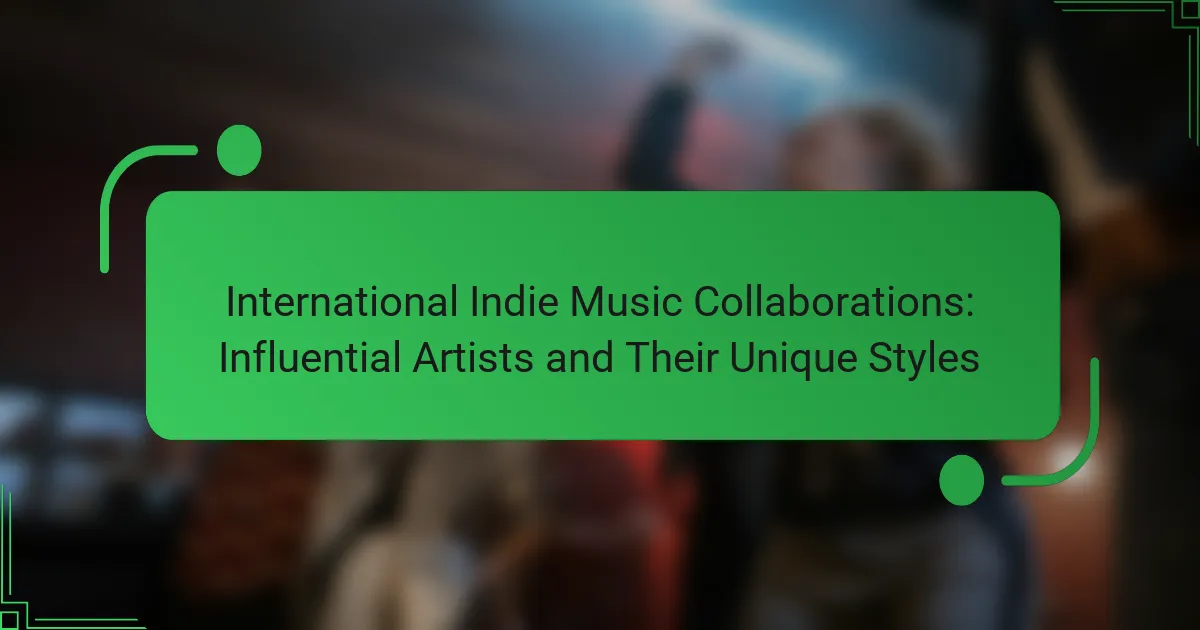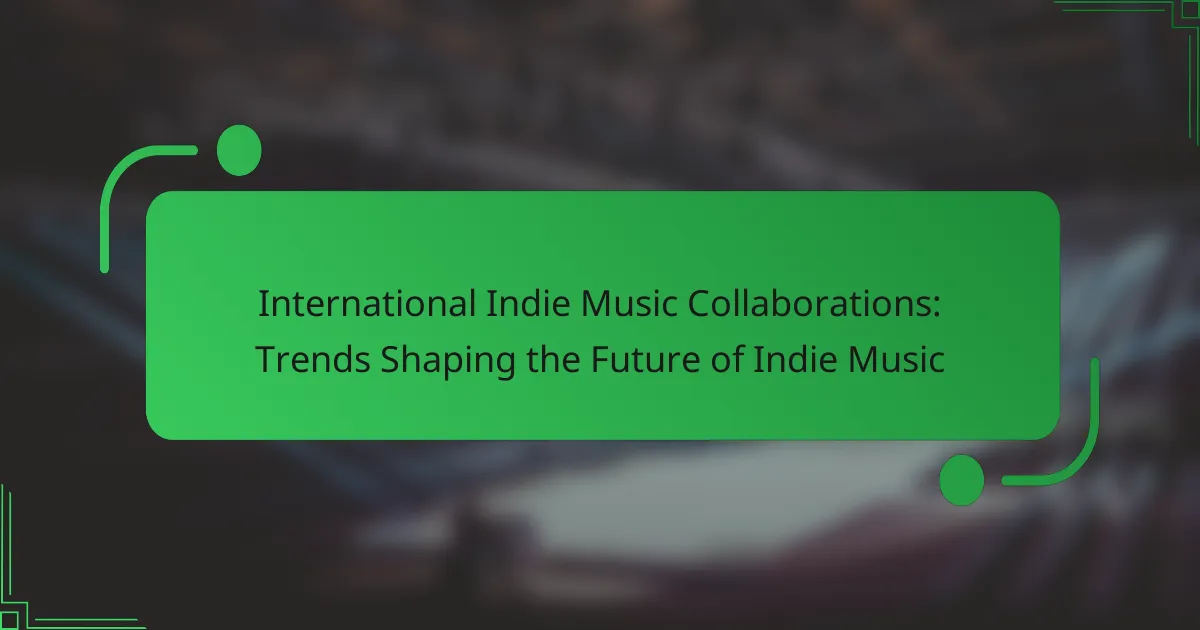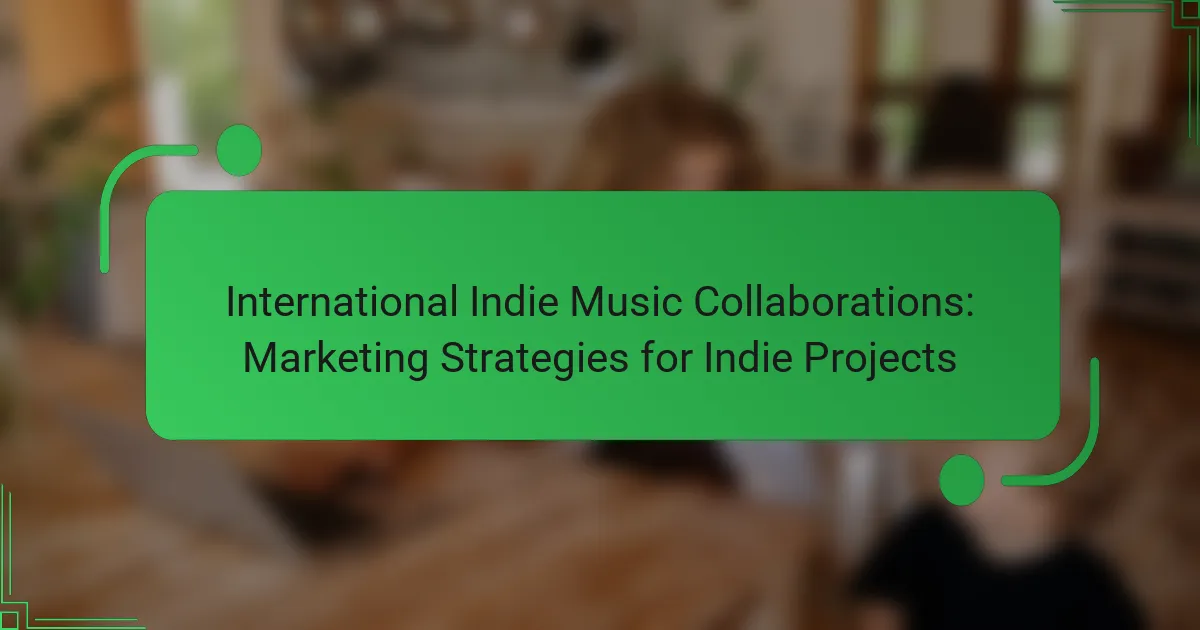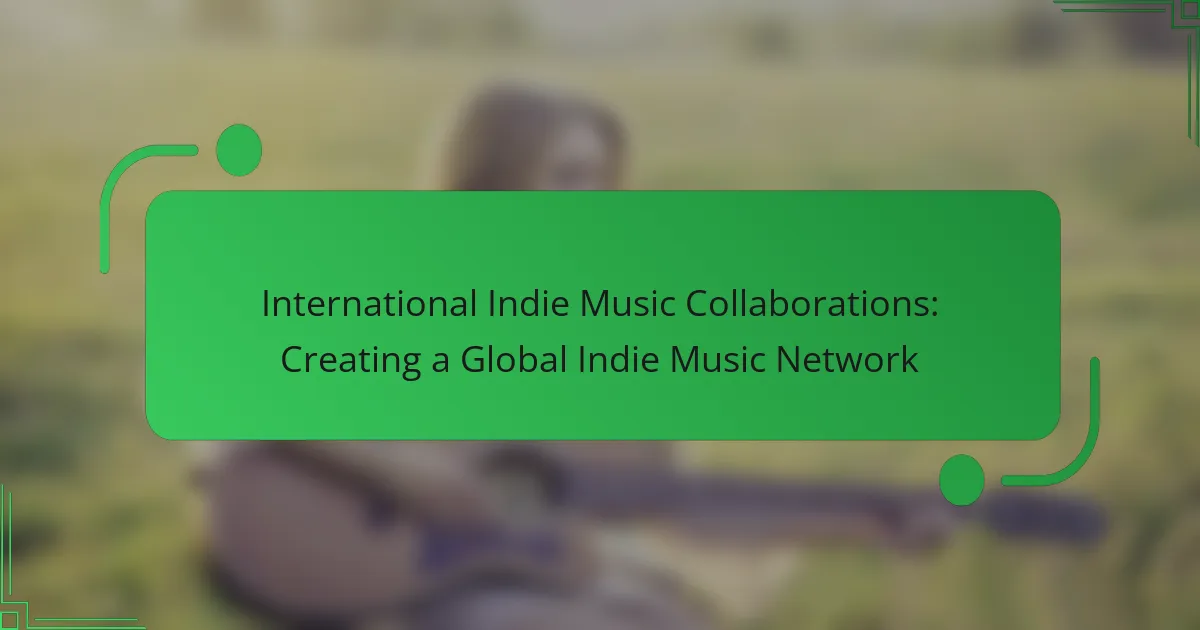International indie music collaborations offer artists the chance to expand their reach and enhance creativity. Key platforms like SoundCloud, Bandcamp, and Spotify facilitate global connections. These collaborations promote cultural exchange and innovative soundscapes. However, artists must navigate challenges such as communication barriers and logistical issues to succeed.
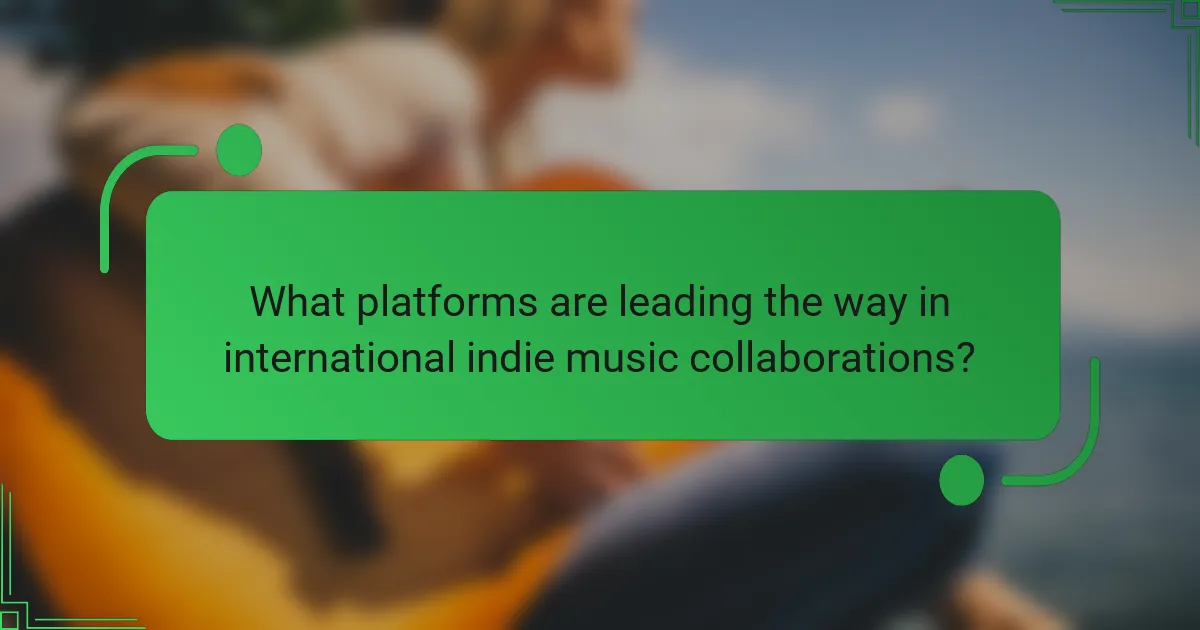
What platforms are leading the way in international indie music collaborations?
Leading platforms for international indie music collaborations include SoundCloud, Bandcamp, and Spotify. These platforms offer unique opportunities for artists to connect globally. SoundCloud enables easy sharing and discovery, fostering collaboration among musicians. Bandcamp supports direct sales and fan engagement, allowing artists to monetise their work effectively. Spotify’s playlist features enhance visibility, promoting cross-border collaborations. Each platform provides distinct features that cater to the needs of indie artists seeking international partnerships.
How do these platforms facilitate cross-border partnerships?
Platforms facilitate cross-border partnerships by connecting artists globally, enabling collaboration across diverse musical styles. They provide tools for communication, project management, and sharing resources. For example, platforms like SoundBetter and Splice allow musicians to find collaborators, share tracks, and work together regardless of location. These platforms enhance visibility and access to international markets, fostering creativity and innovation in music.
Which features enhance collaboration for artists on these platforms?
Collaborative features on platforms enhance artist interaction through tools like real-time editing, file sharing, and communication channels. These features foster creativity and streamline project management. For instance, integrated video conferencing allows for live feedback and brainstorming. Additionally, project management tools help track progress and deadlines, ensuring smooth collaboration. Social networking capabilities connect artists with potential collaborators globally, expanding opportunities.
What are the user demographics of these platforms across different regions?
User demographics for international indie music collaboration platforms vary by region. North America has a high concentration of young adults aged 18-34, while Europe sees a more diverse age range from 25-44. In Asia, users are predominantly younger, with significant engagement from artists aged 18-30. South America shows a growing interest among users aged 20-35, reflecting a vibrant indie scene. Africa has emerging platforms attracting users across various age groups, primarily 18-40. These demographics indicate the platforms’ potential to connect artists globally, catering to diverse audiences.
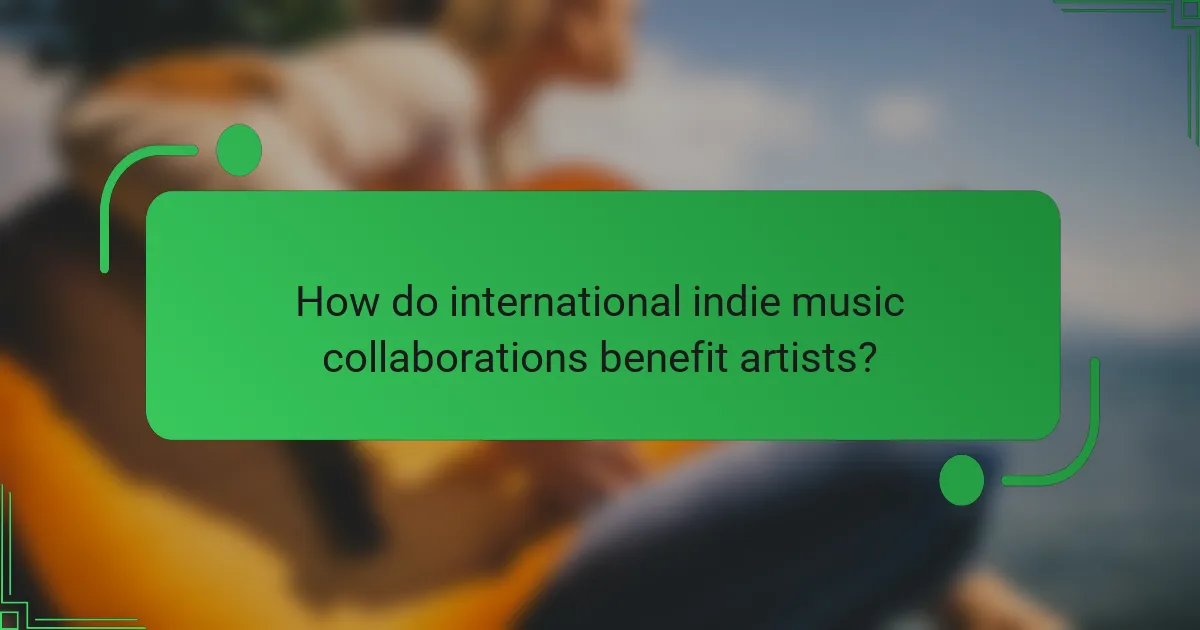
How do international indie music collaborations benefit artists?
International indie music collaborations benefit artists by expanding their reach, enhancing creativity, and fostering cultural exchange. Collaborating with international artists exposes musicians to diverse audiences, increasing their fan base and potential revenue. These partnerships often lead to innovative soundscapes, as artists blend different musical styles and influences. Additionally, such collaborations promote cultural understanding and appreciation, enriching the global music landscape.
What opportunities do these collaborations create for exposure and networking?
International indie music collaborations create significant opportunities for exposure and networking. Artists can connect with diverse audiences, enhancing their visibility. Collaborations often lead to shared resources and promotional efforts, amplifying reach. Networking with other musicians opens doors to new projects and performances, fostering community. These partnerships can result in increased social media engagement and cross-promotion, further expanding an artist’s fan base.
How can collaborations influence an artist’s creative process?
Collaborations significantly enhance an artist’s creative process by introducing diverse perspectives and techniques. These partnerships foster innovation, allowing artists to explore new genres and styles. For instance, international indie music collaborations often leverage digital platforms, enabling artists to connect globally. This access creates opportunities for unique soundscapes, enriching their artistic expression. Additionally, collaborations can lead to increased exposure and audience engagement, amplifying an artist’s reach in the competitive music landscape.
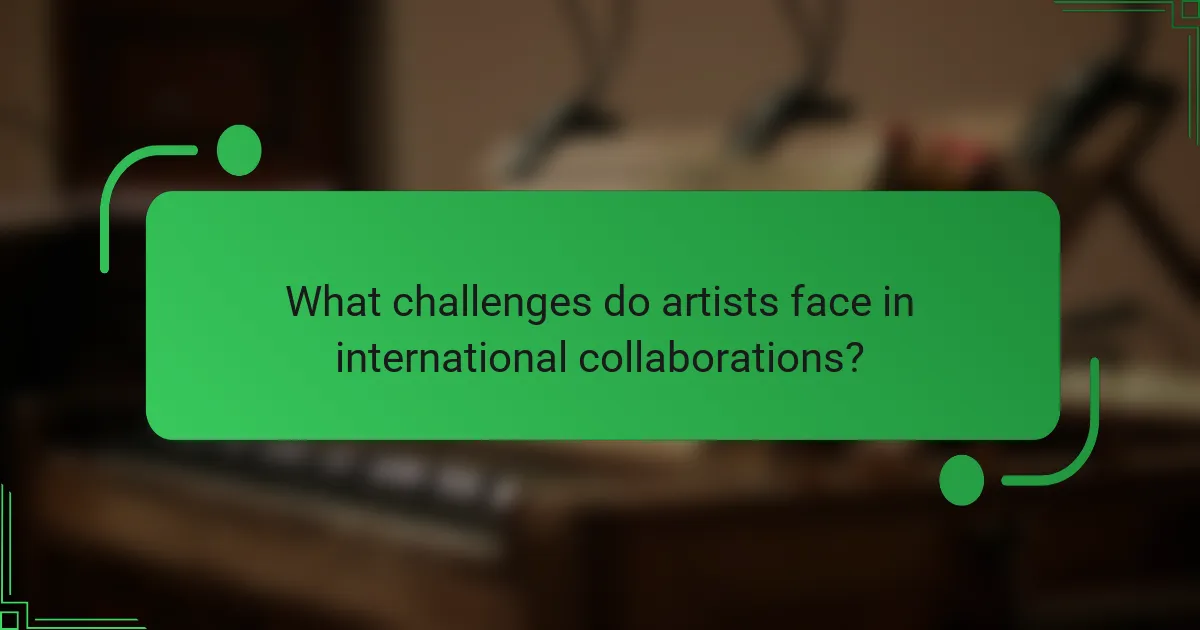
What challenges do artists face in international collaborations?
Artists face challenges in international collaborations, including cultural differences, communication barriers, and logistical issues. These factors can hinder creativity and project execution. Cultural misunderstandings may lead to misinterpretations of artistic intent, while varying time zones can complicate scheduling. Additionally, differing industry standards and practices can create obstacles, affecting collaboration efficiency and outcomes.
How do cultural differences impact collaboration outcomes?
Cultural differences significantly influence collaboration outcomes in international indie music projects. These differences affect communication styles, creative processes, and decision-making. Understanding cultural nuances fosters better teamwork and innovation.
For instance, artists from collectivist cultures may prioritise group harmony, while those from individualistic backgrounds might focus on personal expression. Such dynamics can either enhance creativity or lead to misunderstandings.
Additionally, language barriers can impact collaboration efficiency. Artists who share a common language often experience smoother interactions, enabling quicker idea exchanges. Conversely, language differences may require more time for clarification and negotiation.
Ultimately, recognising and valuing cultural diversity can lead to richer musical experiences and broader audience appeal, enhancing the overall success of international collaborations.
What legal considerations should artists be aware of?
Artists engaging in international indie music collaborations should be aware of copyright laws, contract agreements, and intellectual property rights. Understanding these legal considerations helps protect their work and ensures fair compensation. Additionally, they must navigate varying laws across countries, which can affect distribution and royalties. Seeking legal advice before entering collaborations can mitigate risks and enhance opportunities.
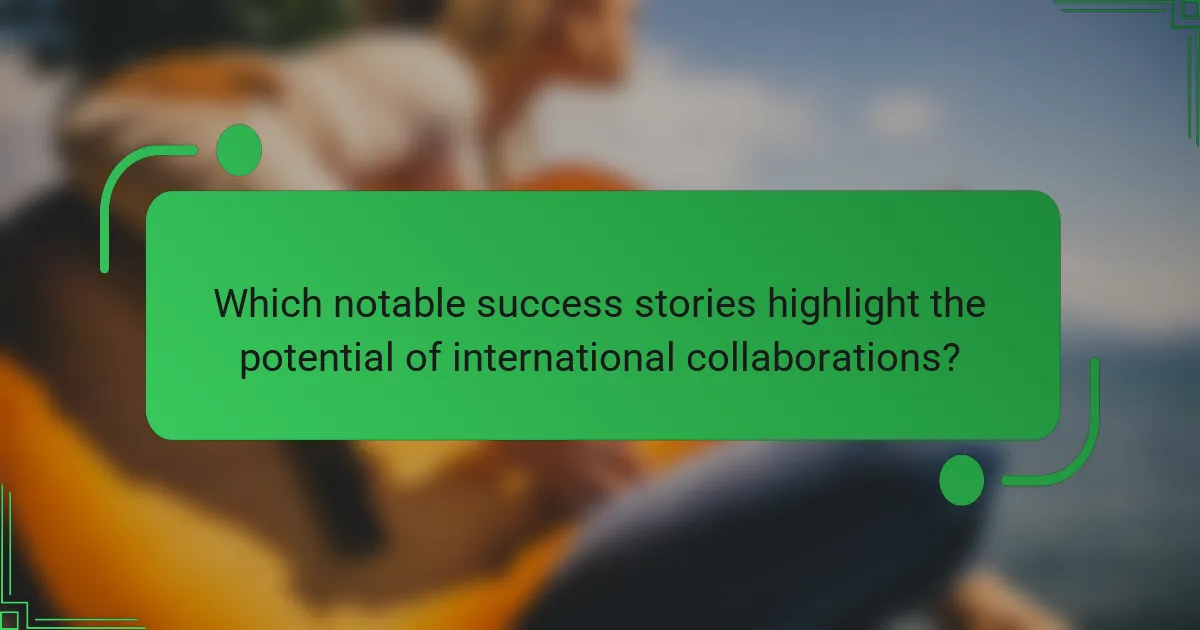
Which notable success stories highlight the potential of international collaborations?
International collaborations in indie music have led to remarkable success stories that showcase their potential. Notable examples include the partnership between American artist Chance the Rapper and Nigerian artist Burna Boy, which transcended cultural boundaries and reached global audiences. Another significant collaboration is between British singer-songwriter Ed Sheeran and Indian artist A. R. Rahman, blending diverse musical styles and expanding their fan bases. These collaborations highlight how artists can leverage platforms like Spotify and SoundCloud to connect with international audiences, ultimately enhancing their visibility and opportunities.
How have specific artists leveraged global platforms for their benefit?
International indie artists leverage global platforms to expand their reach and collaborate with diverse talents. These platforms provide opportunities for exposure, networking, and access to international audiences. For example, artists like Billie Eilish and Khalid have used social media and streaming services to collaborate with musicians worldwide, enhancing their creative output and fan engagement. As a result, indie artists can blend cultural influences, creating unique soundscapes that resonate globally. This collaborative approach not only elevates their music but also fosters a sense of community within the indie music scene.
What lessons can be learned from these success stories?
International indie music collaborations teach artists the importance of networking, creativity, and cultural exchange. These collaborations open doors to diverse audiences and innovative musical styles. Artists gain exposure and valuable insights by working with peers from different backgrounds. Success stories highlight the significance of platforms that facilitate collaboration, enabling artists to share resources and ideas effectively.
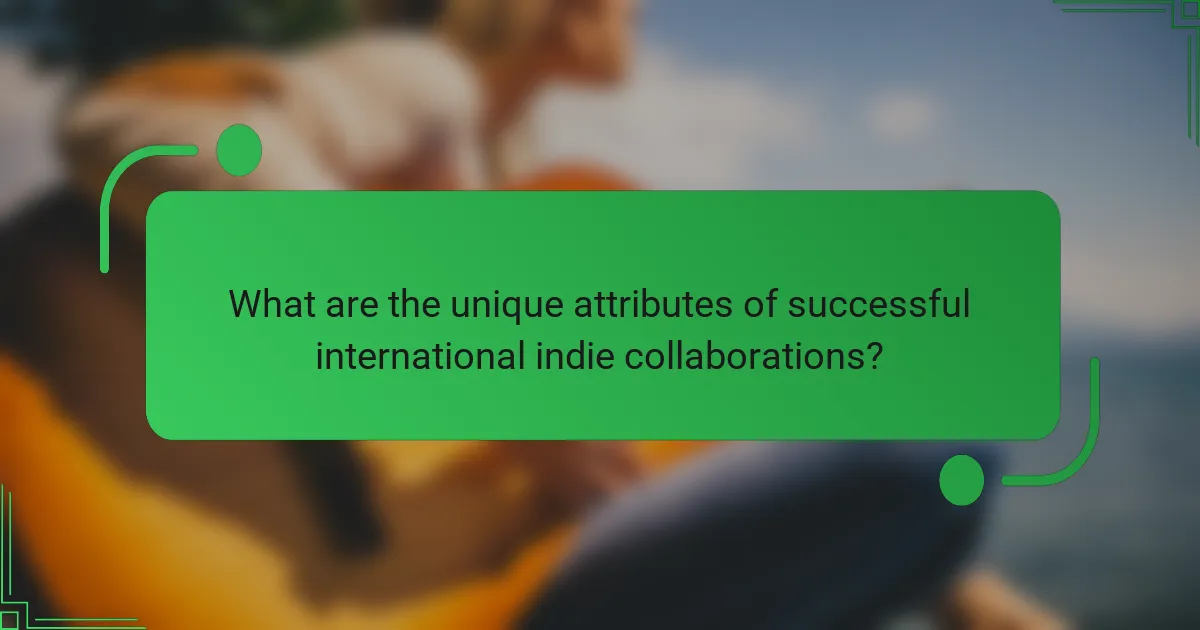
What are the unique attributes of successful international indie collaborations?
Successful international indie collaborations often feature unique attributes such as diverse cultural influences, innovative genre fusions, and access to global audiences. These collaborations enhance creativity and broaden artistic reach, allowing artists to experiment and connect across borders. Additionally, shared resources like technology and marketing platforms facilitate collaboration, making it easier for indie artists to produce and promote their work collectively.
How does genre influence collaboration dynamics?
Genre significantly influences collaboration dynamics by shaping creative processes and audience engagement. Different genres attract diverse artist collaborations, impacting styles and approaches. For instance, indie artists often blend genres, fostering innovation. This genre fluidity enhances opportunities on platforms like Bandcamp and SoundCloud, where artists can reach wider audiences. Unique genre characteristics, such as lyrical themes or instrumentation, also affect collaboration outcomes, influencing how artists connect and create together.
What role does technology play in enhancing collaboration quality?
Technology significantly enhances collaboration quality in international indie music by providing diverse platforms that connect artists globally. These platforms facilitate real-time communication, enabling seamless sharing of ideas, files, and feedback. Collaborative tools like cloud storage and project management software streamline workflows, allowing artists to focus on creativity rather than logistics. Moreover, social media and streaming services expand exposure, helping artists reach wider audiences and attract potential collaborators. As a result, technology fosters innovative partnerships that can lead to unique musical creations.
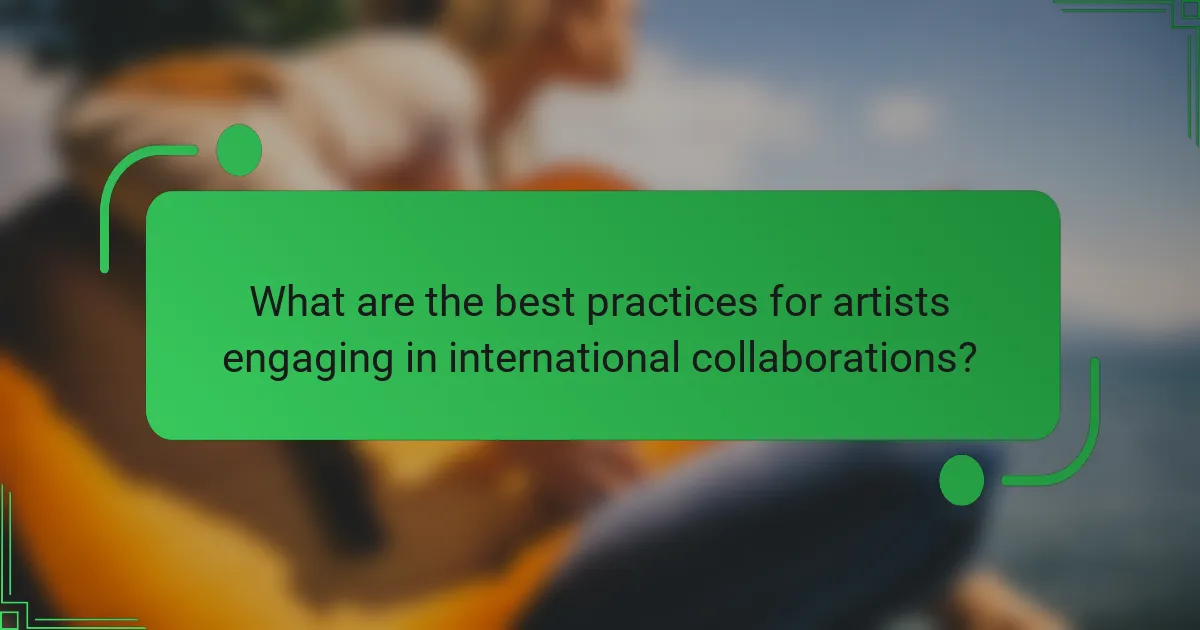
What are the best practices for artists engaging in international collaborations?
Artists engaging in international collaborations should prioritise clear communication, cultural sensitivity, and leveraging technology. Establishing mutual goals enhances creativity and productivity. Utilise platforms like SoundCloud, Bandcamp, and social media to connect with potential collaborators worldwide. Regularly share updates and feedback to maintain alignment and foster trust.
How can artists effectively communicate across cultures?
Artists can effectively communicate across cultures by leveraging international indie music collaborations. These collaborations provide platforms that foster cross-cultural understanding and creativity.
Utilising digital platforms like Bandcamp and SoundCloud enables artists to share their work globally, reaching diverse audiences. Collaborative projects often blend different musical styles, promoting cultural exchange and innovation.
Networking through social media can enhance visibility and facilitate connections with artists from various backgrounds. Engaging in virtual festivals and collaborative songwriting sessions allows for real-time interaction and idea sharing.
By embracing cultural diversity, artists can create unique sounds that resonate with a wider audience, ultimately enriching the global music landscape.
What strategies maximize the benefits of collaboration while minimizing challenges?
To maximize collaboration benefits while minimizing challenges, artists should leverage digital platforms, establish clear communication, and define roles.
Digital platforms like SoundCloud and Bandcamp enable global reach, enhancing exposure and networking. Clear communication prevents misunderstandings, fostering a positive working environment. Defining roles ensures accountability and efficiency in the collaborative process.
Additionally, artists should embrace feedback, as it promotes growth and innovation. Building a supportive community around collaborations can also mitigate challenges, creating a more enriching experience for all participants.
What common mistakes should artists avoid when collaborating internationally?
Artists should avoid miscommunication, cultural insensitivity, and unclear expectations in international collaborations. Effective collaboration requires understanding diverse perspectives and establishing clear roles. Artists often overlook the importance of legal agreements, which can lead to disputes. Additionally, failing to utilize technology for seamless communication can hinder progress.
